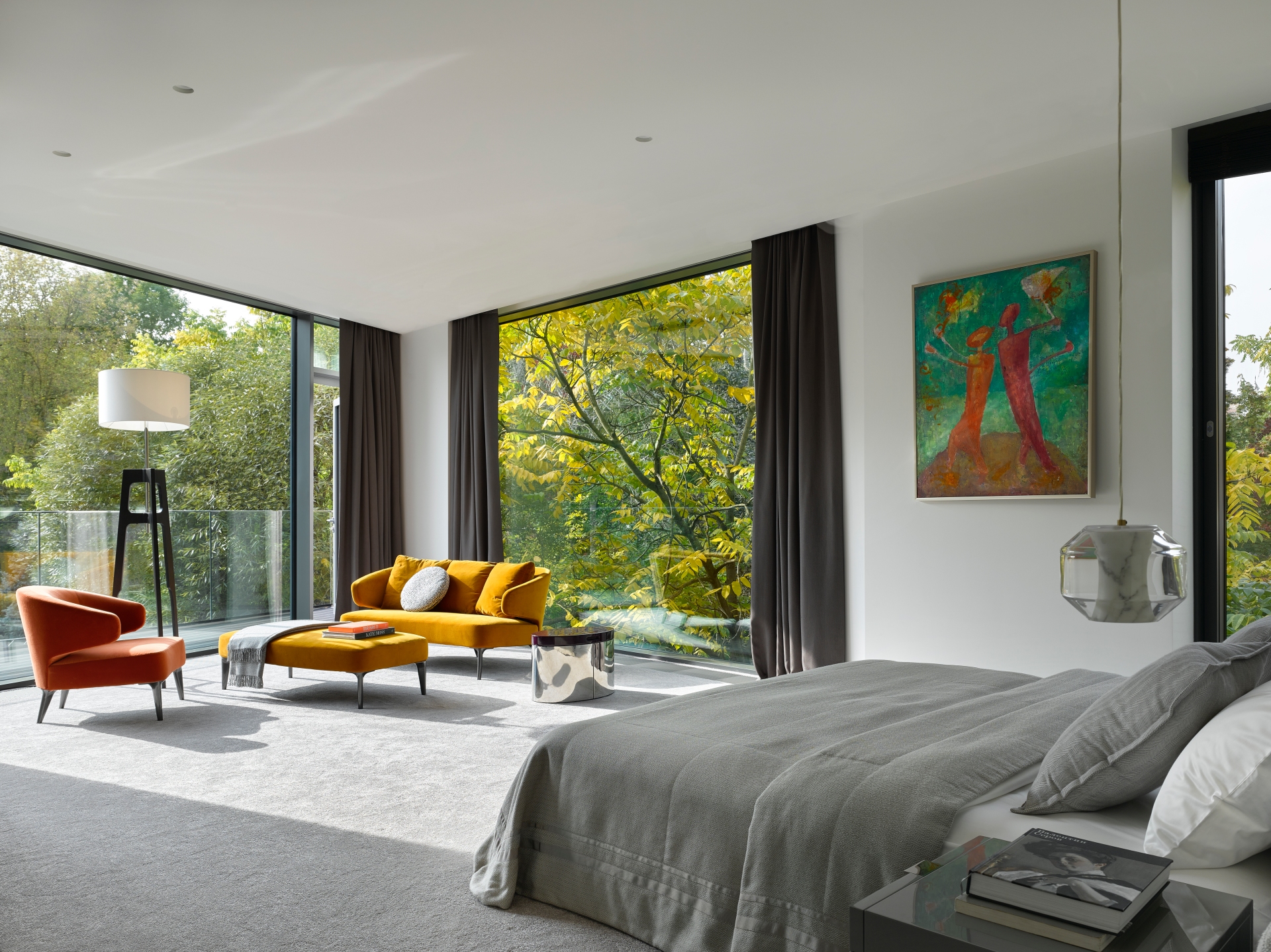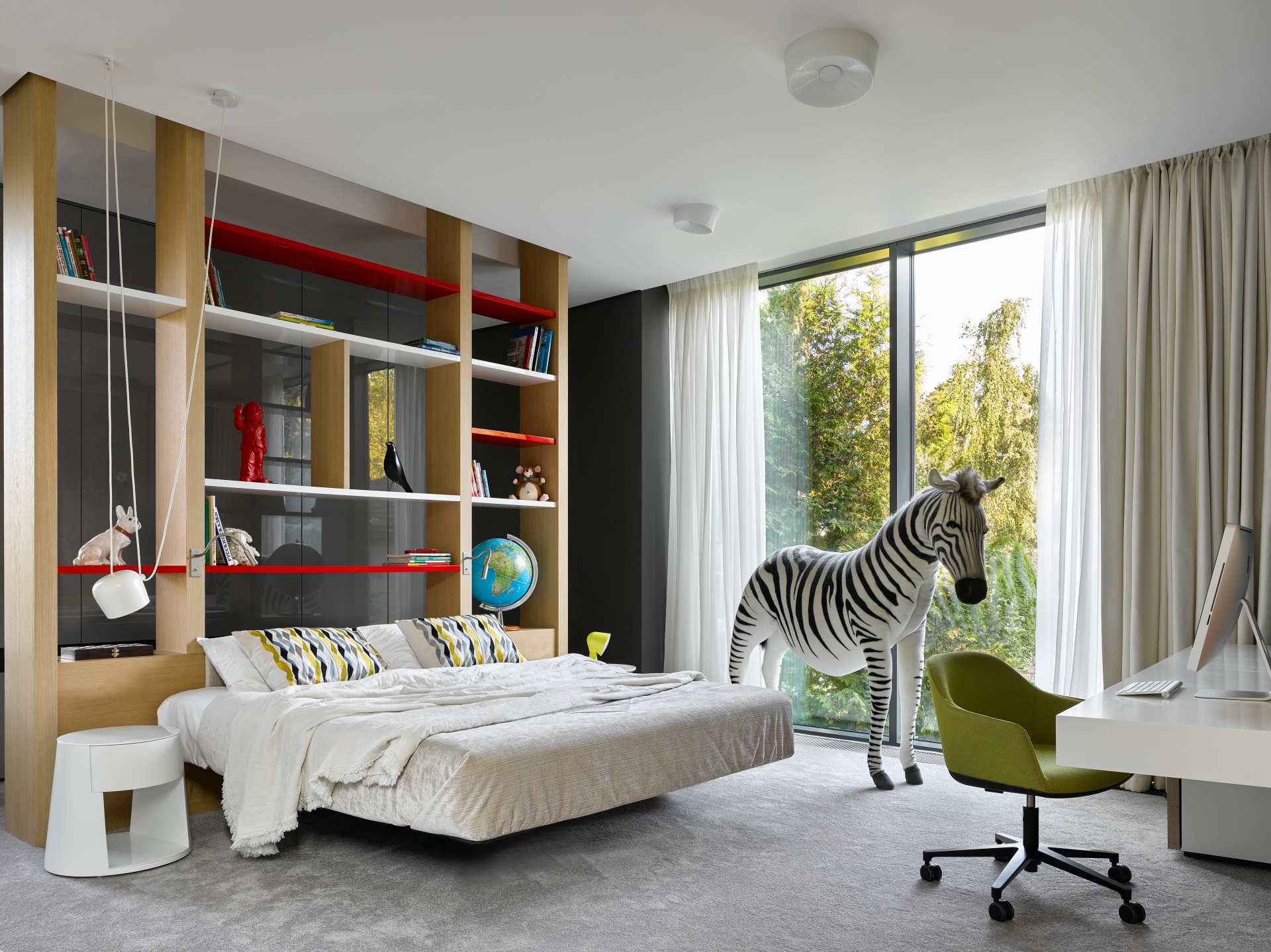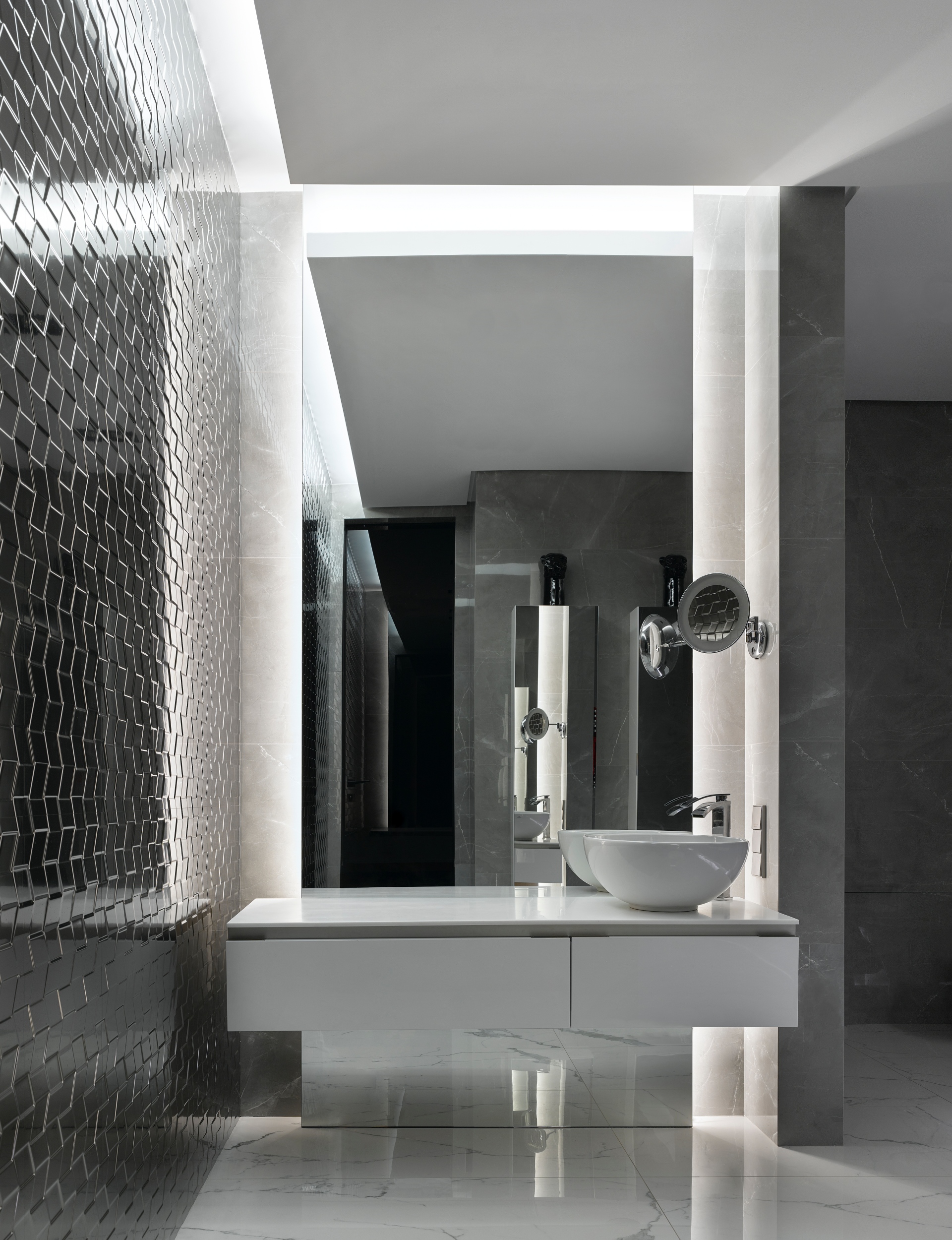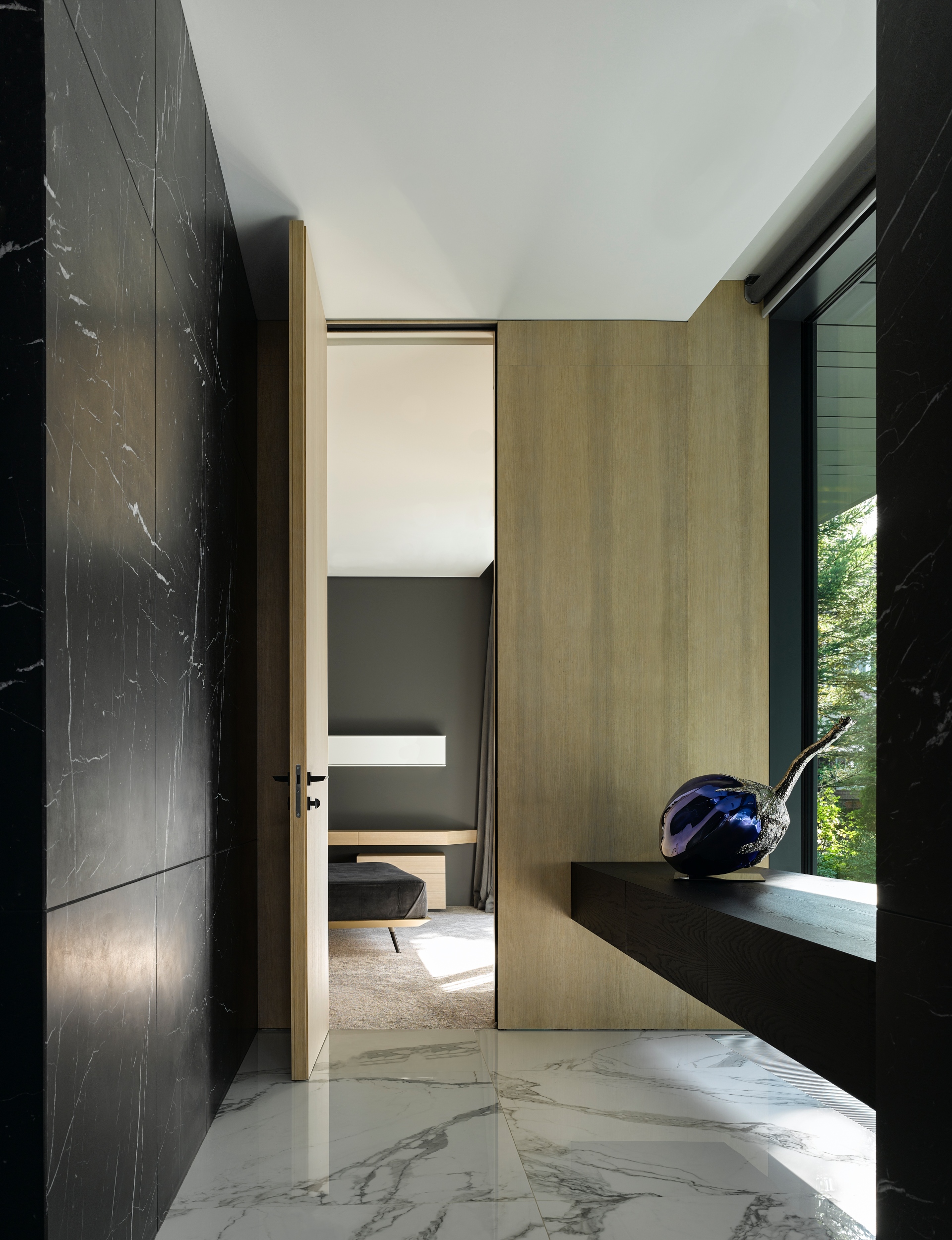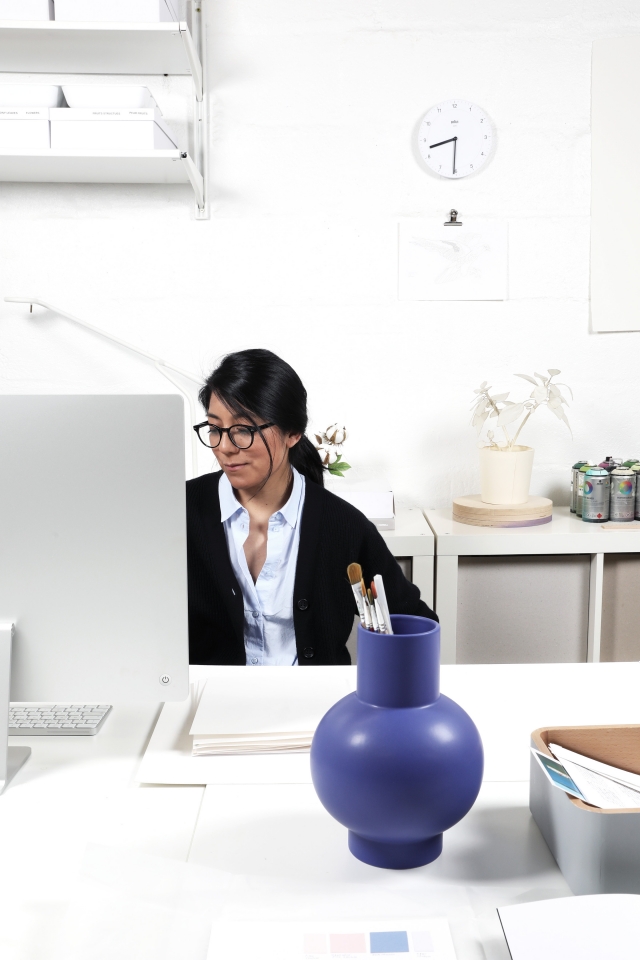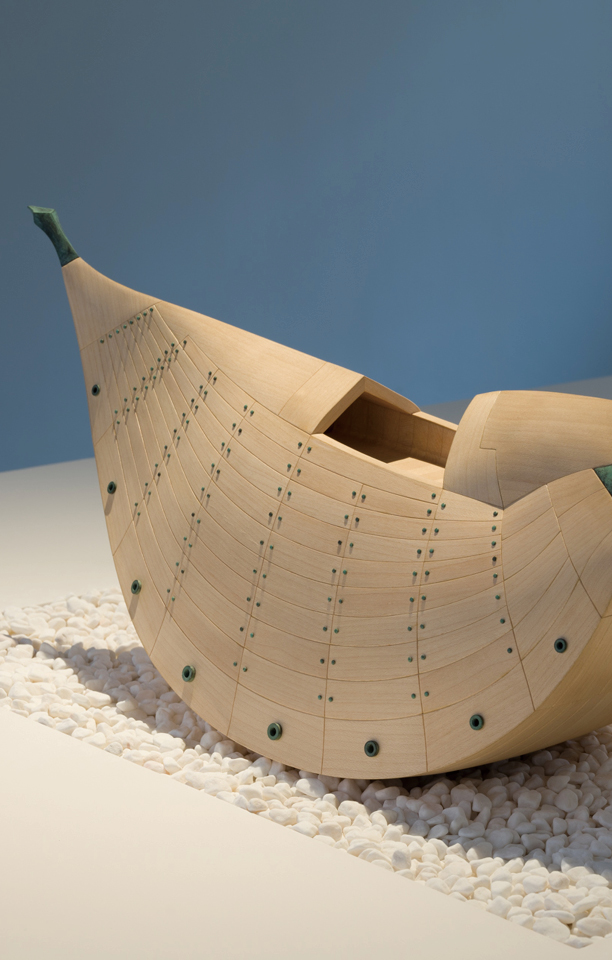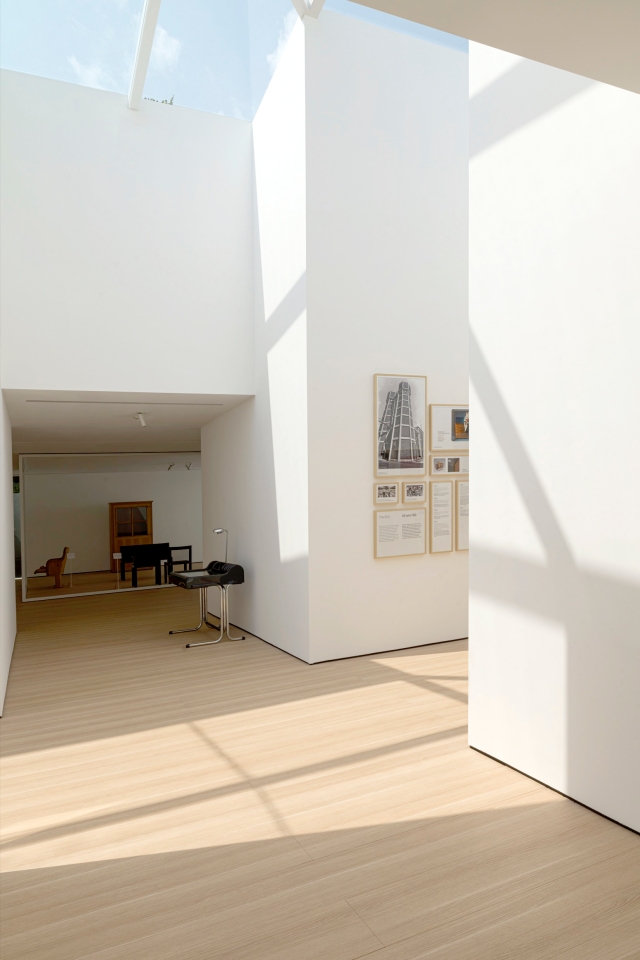SAOTA is a South African architectural studio known for advancing the possibilities of 20th century modernism. This project – their first residence in Moscow – represents the tradition of the terrace, with its emphasis on an outdoor orientation, but in a context and climatic condition vastly different from the origin of the type. Glazing systems have been incorporated to effectively provide insulation in the Russian winter extremes, which solves the climate challenge. But the real challenge was to mediate a dialogue between the two traditions to resolve the new approach harmoniously in a Russian context. This design addresses the urban architectural character of the capital city and the pocket of natural pine forest on the island - something of a rarity this close to the historic centre.

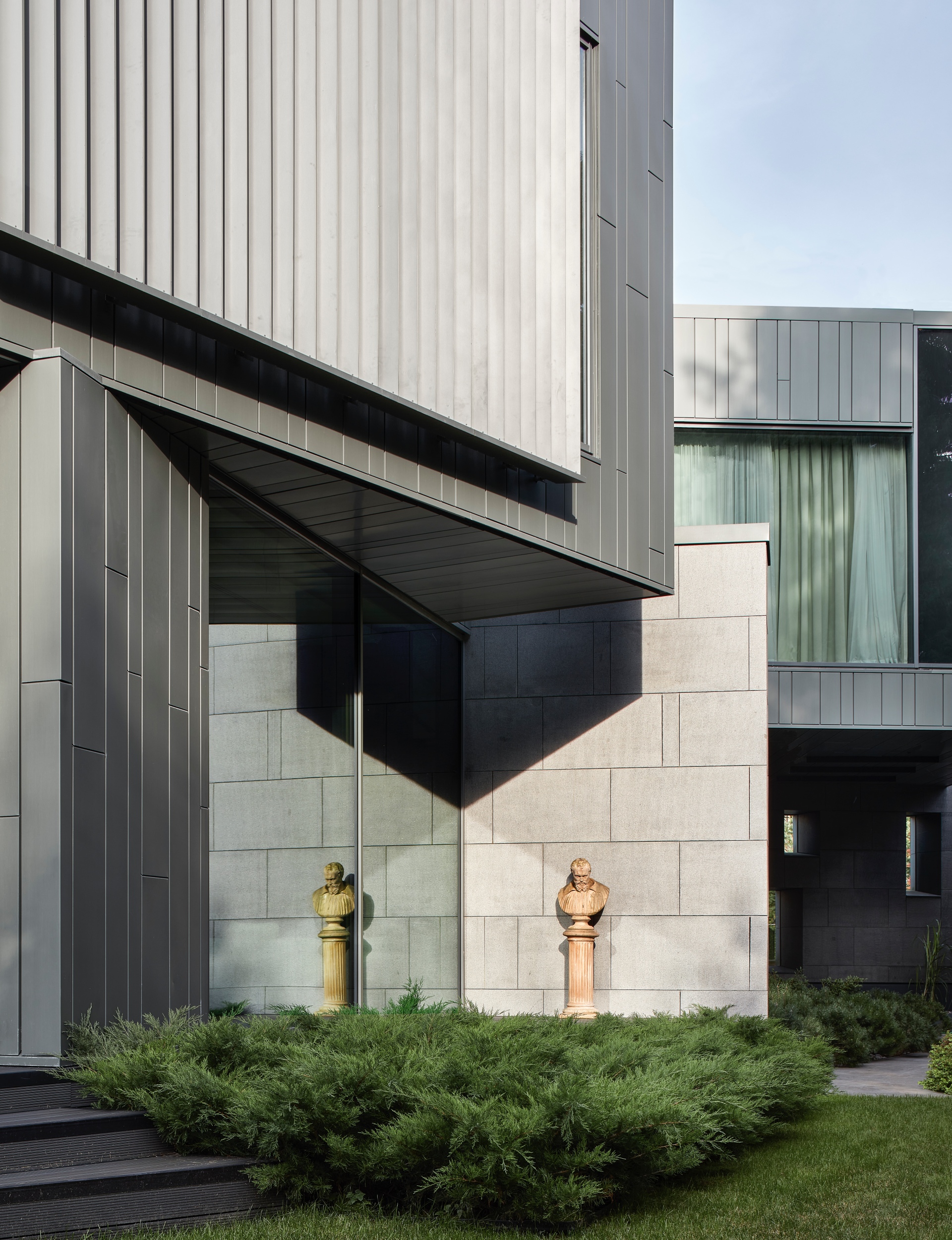
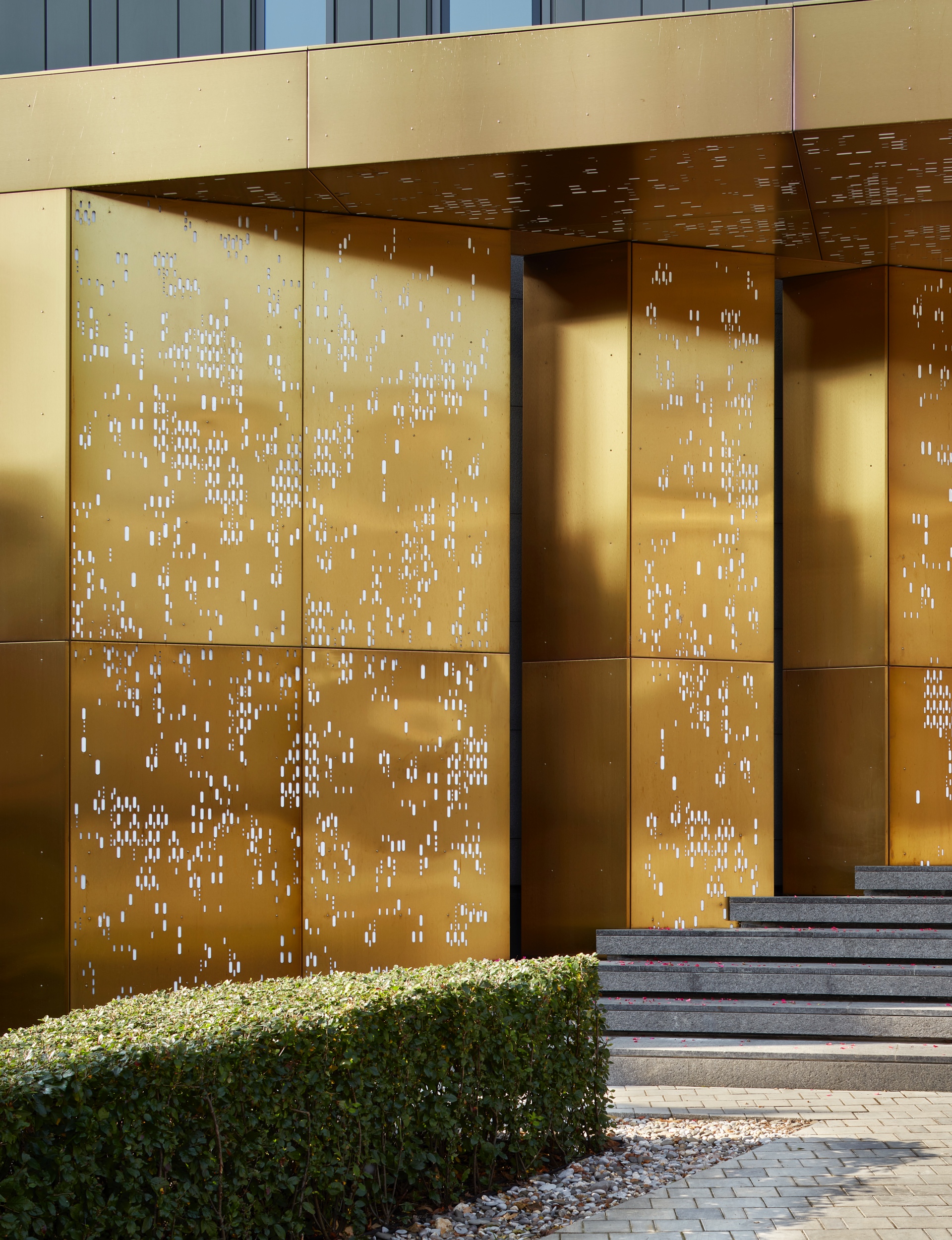
The pinewoods that the site overlooks are a significant motivation for the design's open, outward-facing orientation. This approach allowed SAOTA to explore a new kind of architecture that invites as much natural light as possible during the dark winter months to compensate for the lack of sun and mitigating its absence. It's a design that makes comfortable arenas to appreciate the external conditions’ beauty, even during the harshest weather conditions. The architectural premise is one of contrasts: the street frontage's heavy protective presence speaks to the capital's monolithic architectural character, built to resist the extremes of heat and cold, which can vary 70 degrees between seasons.
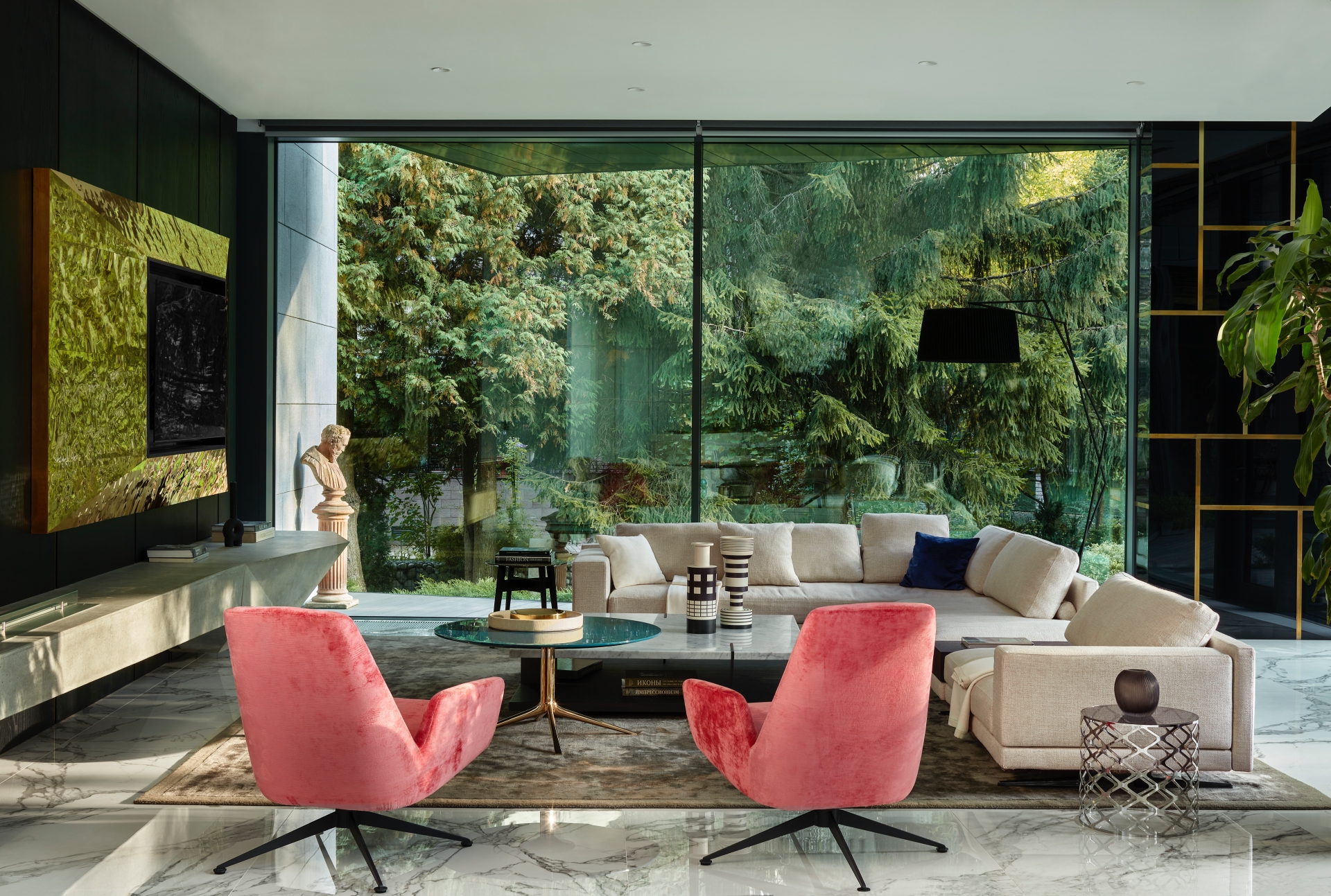
Surrounding the main entrance is a sculptural buckle. This backlit bronze-clad feature façade not only acts as a visual prompt towards the entrance opening on the otherwise relatively featureless façade but also communicates the promise of the luxury and light interiors in the private spaces beyond the threshold. It heightens the experience of crossing from the public realm to the private domain with its predominant treed landscape.

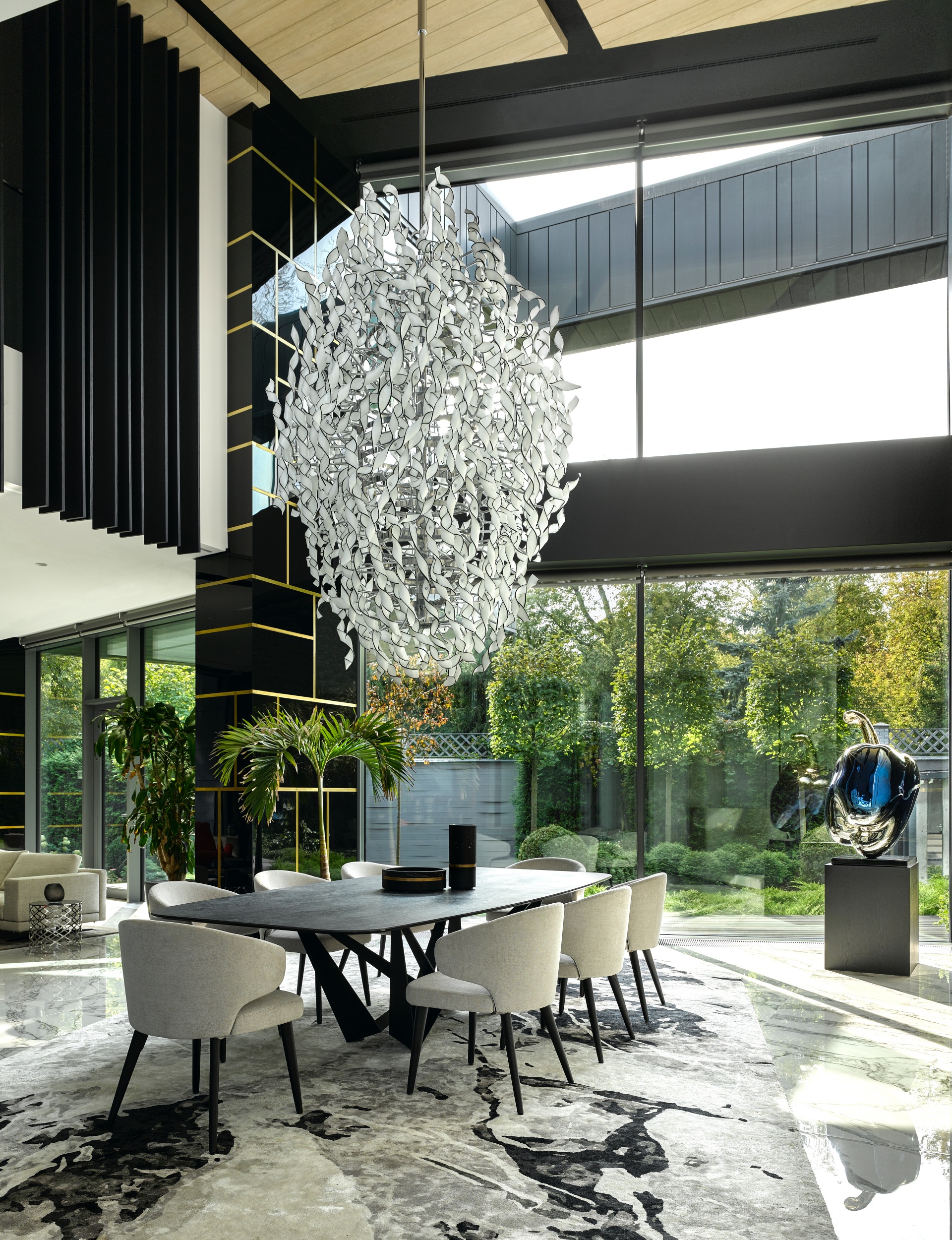
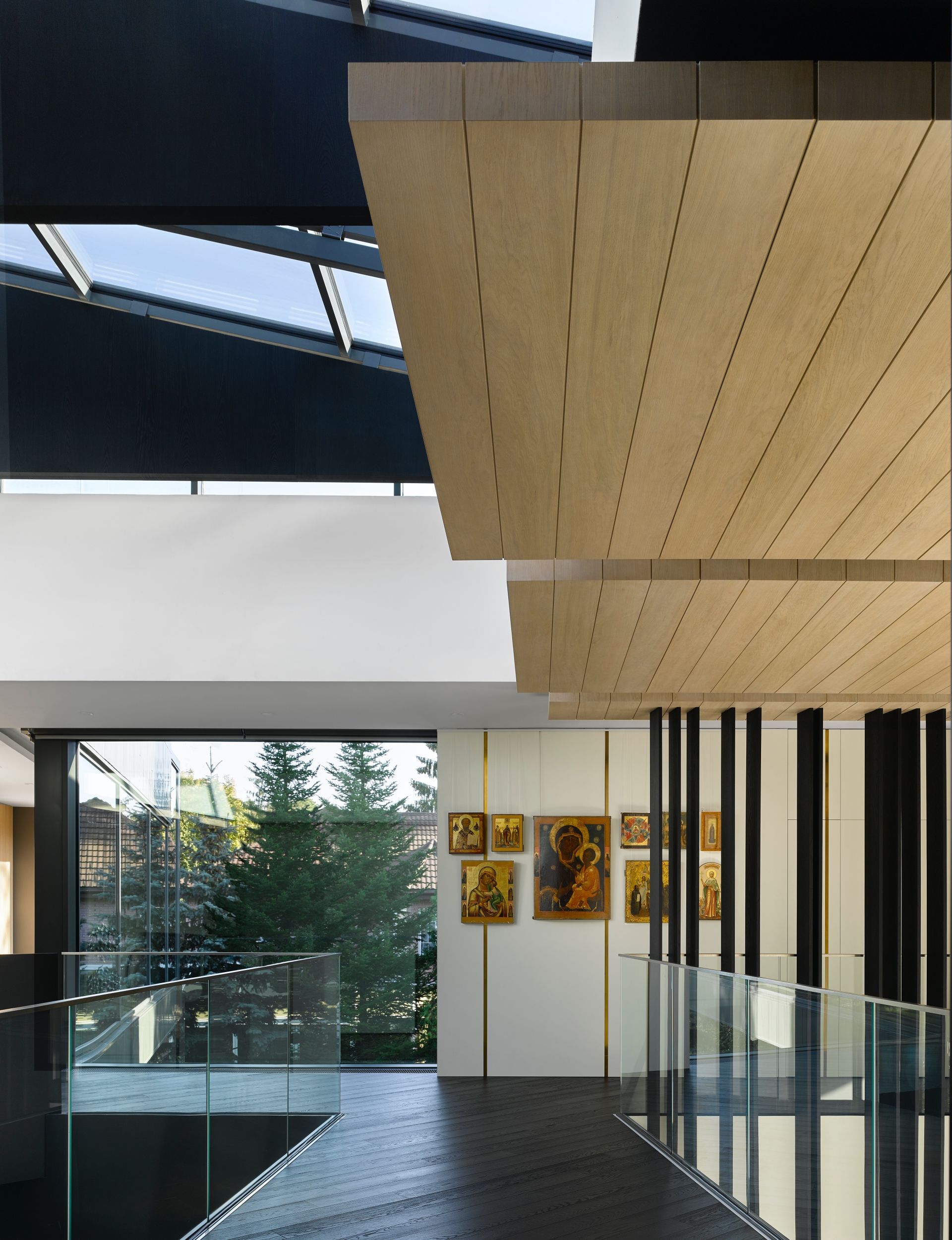
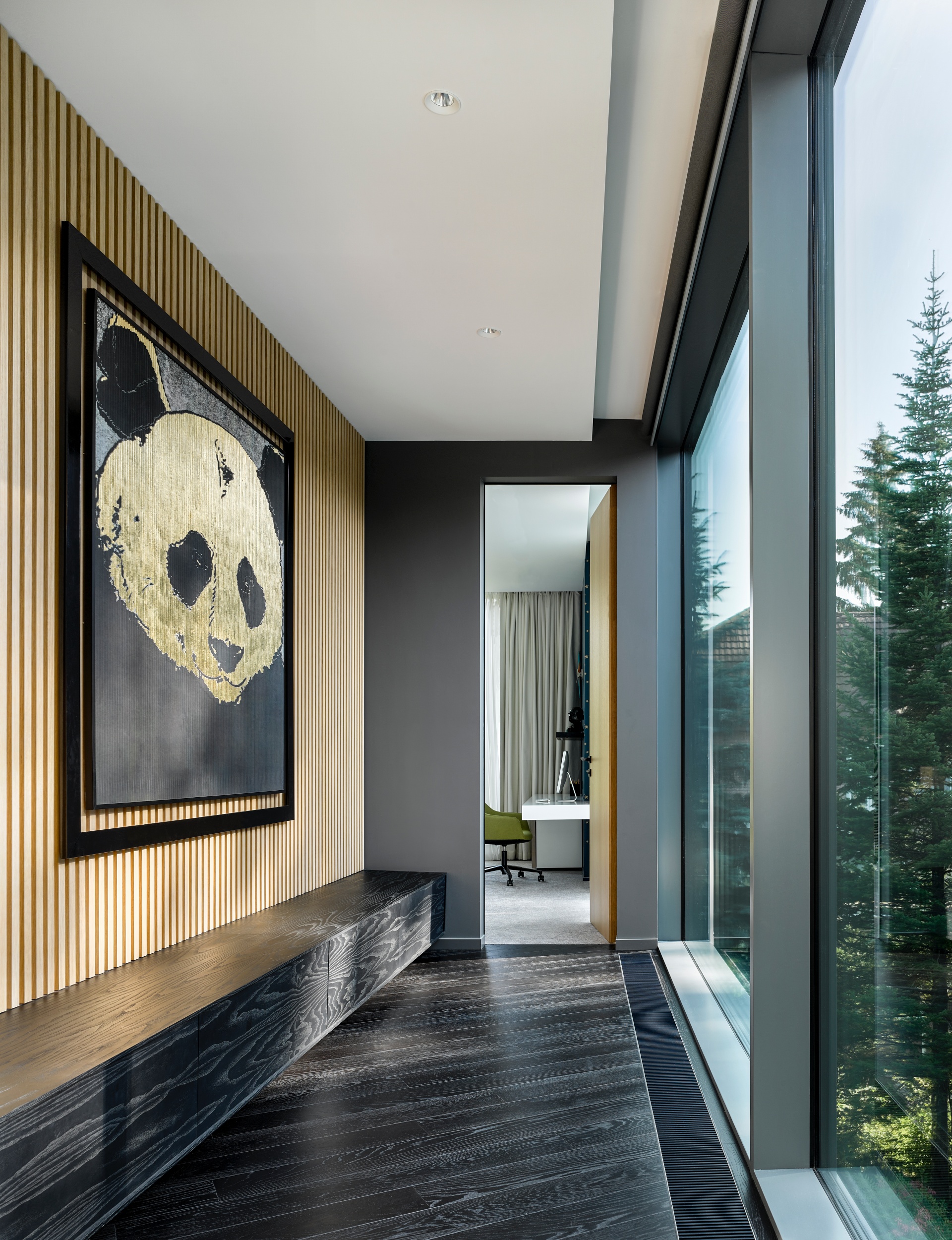
From the garden, the architecture presents a contrasting façade. Open fragmented glass walls invite views of the pines in, blurring the distinction between the interior and exterior. The outdoor terraces and the faceted, angular façade create courtyards and external rooms that facilitate an interaction between landscape and architecture that is a departure from the local tradition. During the summer months, it is possible to live outside as you might in South Africa or California. In winter, the interiors, which are nevertheless warm and cosy, can celebrate the beauty of the snowy landscape and pines in an altogether new approach to the harsh conditions. Even during winter, the focus remains on the terrace rather than the hearth.
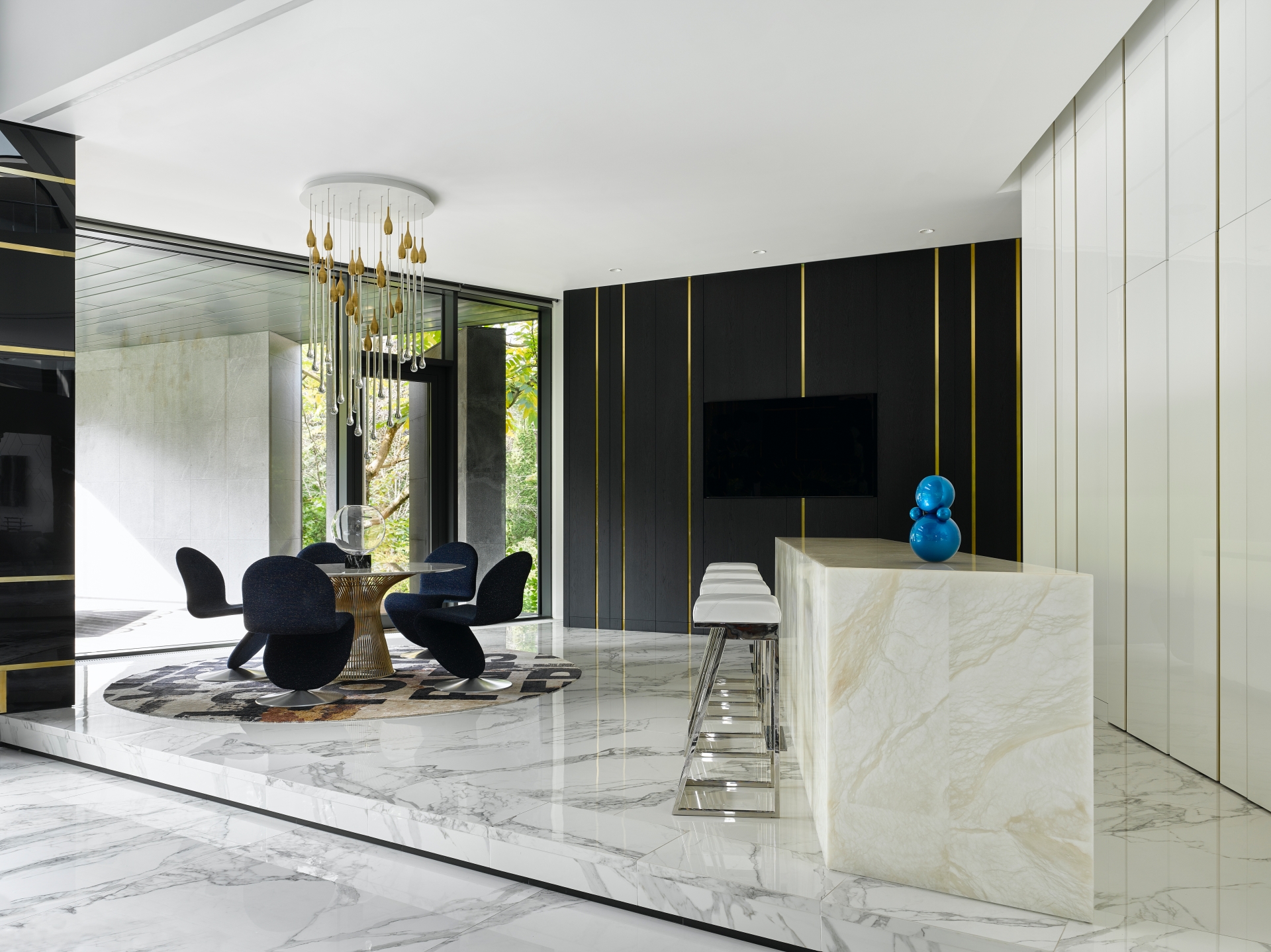
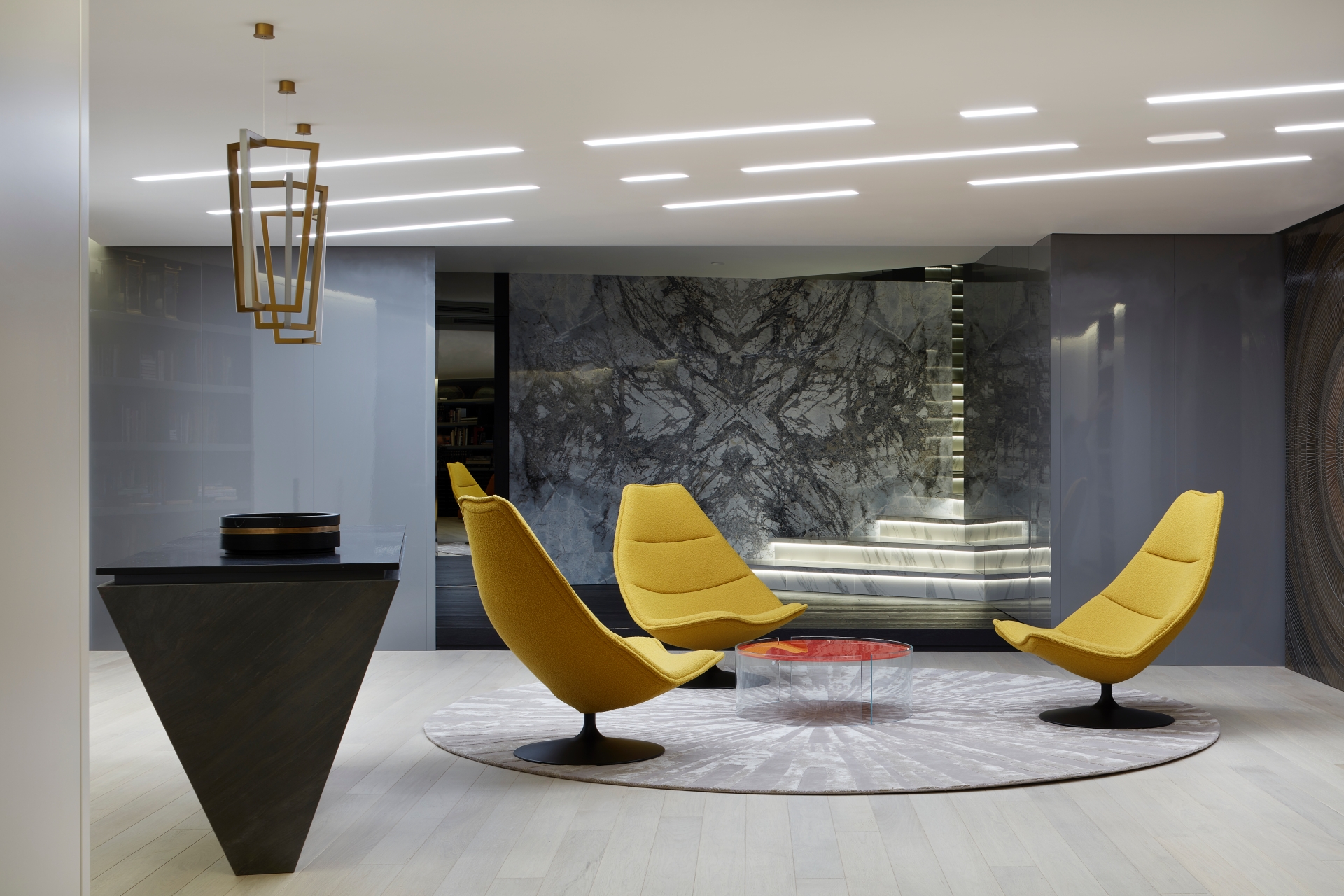
SAOTA used a silver-grey metal cladding on the exterior that complements and enhances the green of the plants and trees of the surrounding forest. The facade takes on the quality of natural material itself, highlighting a bespoke crafted quality in its detailing that speaks to the unique approach to the house's design and furnishing, especially in the interior design. Inside, natural materials predominate, from exotic marbles (some backlit), to metal and timber surfaces that bring softness and warmth. Meanwhile, ARRCC – an interior design studio - maintains a dialogue with the architecture in their interior design details. A swirling sculptural staircase contrasts playfully with the angular architectural elements where they converge, resolving them in an organic flourish and signalling a subtle change of character between the more public sociable living space on the ground level and the bedrooms upstairs.
